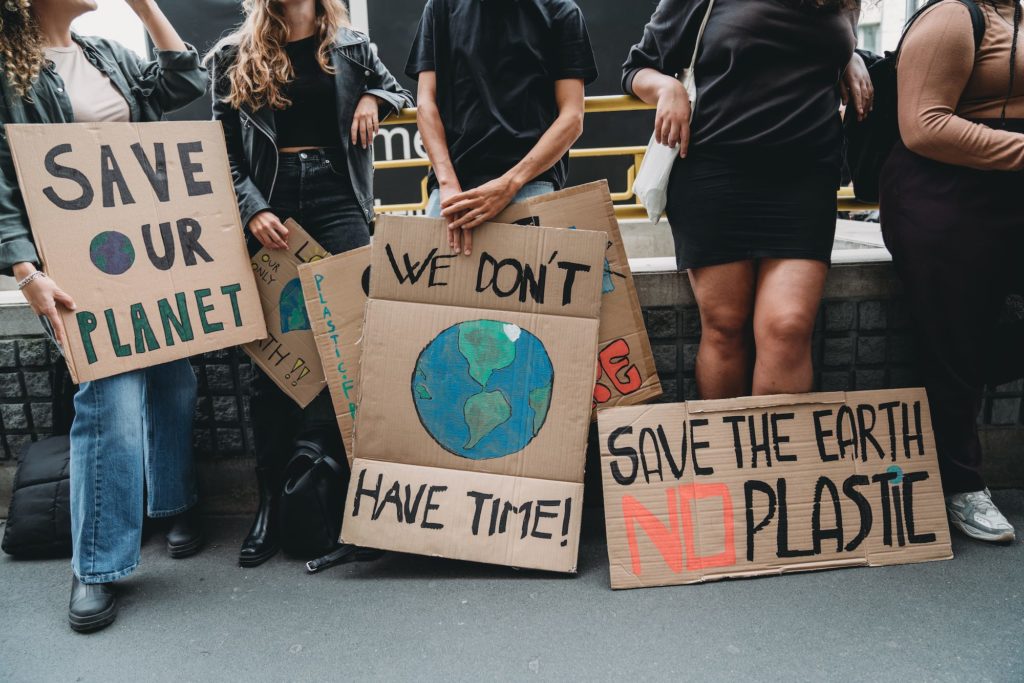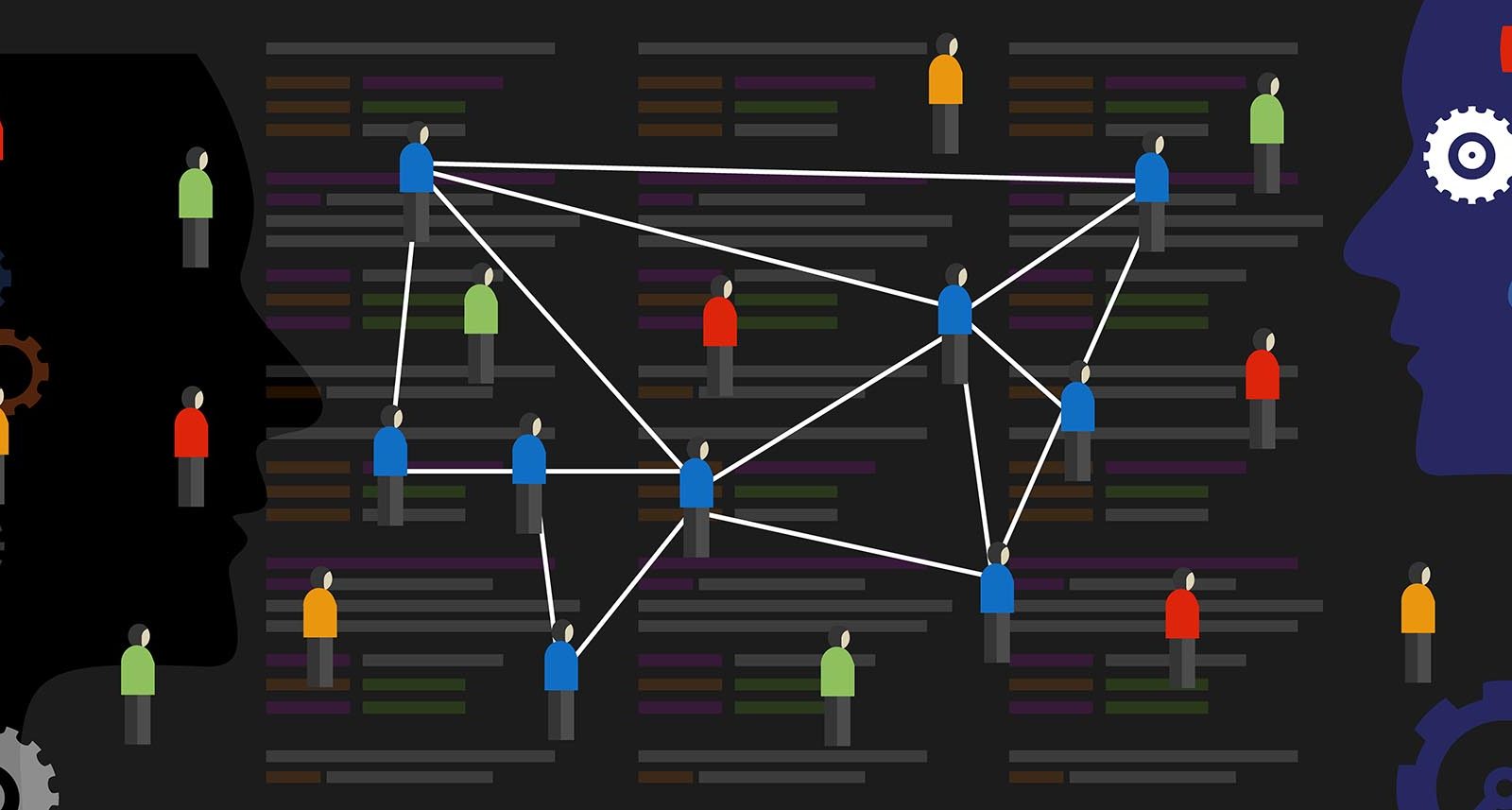Scaling Up Change: A Critical Review and Practical Guide to Harnessing Social Norms for Climate Action
Psychological Science in the Public Interest (Volume 23, Number 2)
Read the Full Text (PDF, HTML)

Temperatures are increasing, glaciers are shrinking as sea levels rise, and natural disasters—from wildfires to floods—are becoming more frequent. Moreover, these extreme weather events and associated resource insecurity are likely to exacerbate political instability and global conflicts. A recent example of the climate crisis is the unprecedented floods in Pakistan that in September, 2022, put a third of the country under water, killing nearly 1,500 people and impacting 33 million. One major cause of the climate crisis is increasing greenhouse-gas concentrations, caused by carbon emissions. Other human interventions exacerbating the climate changes that threaten the planet include overfishing, poor land-use practices, and the burning of forests (to make way for activities such as cattle farming, for example).
Mitigating climate change requires local, national, and global responses that include legislation, regulation, and market-based solutions. However, pressure from social movements and shifting social norms may also help to promote a more sustainable future, according to Sara M. Constantino, Gregg Sparkman, Gordon Kraft-Todd, Cristina Bicchieri, Damon Centola, Bettina Shell-Duncan, Sonja Vogt, and Elke U. Weber in this issue of Psychological Science in the Public Interest (Volume 23, Issue 2). The authors discuss how social norms—“patterns of behaviors or values that depend on expectations about what others do and/or think should be done”—can be harnessed for climate action, which can include efforts to mitigate greenhouse-gas emissions through personal actions, policy support, or activism, and efforts to increase communities’ resilience and adaptive capacity to extreme weather events and other impacts of climate change.
Reinforcing sustainable social norms, changing unsustainable norms
Social norms influence human behaviors and beliefs and thus can inform climate-relevant behaviors and preferences (e.g., water and energy conservation, recycling, demand for sustainable goods). In this review, Constantino and colleagues do not suggest that individual action or social change can replace climate legislation or structural changes, although they focus on the role of social norms in shaping individual and community-level behaviors and preferences.
Harnessing the power of social norms for climate action can take two interrelated forms, the authors explain. Social-norm interventions attempt to increase the adoption of sustainable social norms. They can be effective in reshaping individuals’ and communities’ behaviors by providing information that corrects biased estimates and/or highlights certain norms about private behaviors (e.g., water use). A social-norm intervention can
- turn attention to sustainable practices and away from unsustainable ones, or highlight normative values that are at odds with the unsustainable practice;
- emphasize the prevalence of a sustainable norm among a segment of the population;
- turn attention to growing trends toward the sustainable norm over time;
- correct misperceptions about the prevalence of the unsustainable behavior in question;
- identify an “information broker” who can start to sever the perceived alignment between a behavior and ideological or cultural values (i.e., when a behavior is polarized).
Social-tipping interventions aim to create change that disrupts unsustainable social norms. These interventions can be used to incentivize change in which individuals and communities adopt sustainable nonnormative behaviors and beliefs. Once enough individuals adopt these nonnormative behaviors, widespread change can occur, eventually tipping societies toward a new social norm. How and whether a norm will spread depends on
- the heterogeneity in preferences, beliefs, and tendency to adhere to social norms;
- the structure of the social network,
- whether preferences for certain behaviors are clustered or central to the identities of certain social groups;
- whether in-group/out-group dynamics create anticoordination incentives (e.g., in politically polarized behaviors);
- how many and which members of a society are initially targeted.
The efficacy and design of any intervention depends on its context, including features of the target behavior, expectations and norms, the community, and the reference group.
Steps of a social-norm or social-tipping intervention:
1. Identify broad aims and sociocultural processes.
2. Identify a target community and behavior or value to be changed.
3. Identify local stakeholders and consider the intervention’s ethics and efficacy.
4. Diagnose the problem (Is it a norm? What kind of norm?), the social context (Who is the reference group?), and the psychological context (What are the underlying mechanisms?).
5. Assess the intervention’s desirability.
6. Design, implement, and evaluate the intervention in cycles of piloting and adapting it.
7. Scale up the intervention with continued monitoring.
Identifying and measuring climate-relevant behaviors
To identify climate-relevant actions that may be suited to social-norm interventions, Constantino and colleagues grouped individual mitigation behaviors aimed at reducing greenhouse-gas emission into five broad categories:
- transportation (e.g., reducing air travel, carpooling, using electric vehicles);
- home energy use (e.g., insulating, installing smart thermostats, turning off lights when leaving the room);
- dietary choices (e.g., eating plant-based diets, reducing food waste);
- social activism (e.g., protesting, voting, advocating at the interpersonal level);
- actions with direct impact on the immediate environment (e.g., littering, recycling).
Unsustainable dietary habits (e.g., meat-based diets), food waste, and air travel are considered some of the top behaviors that contribute to carbon emissions and environmental degradation. “They are also culturally and socially determined behaviors,” Constantino and colleagues write. Thus, social norms will shape the adoption or abandonment of these behaviors.
Social norms are interdependent, self-enforcing patterns of behaviors or shared informal rules. They exist in social networks and often spread through complex contagion (requiring social reinforcement from multiple sources) and social tipping (where local shifts in norms spread and become global changes). Individuals tend to act in accordance with their beliefs about what others in their relevant reference group do and/or think should be done.
“Several researchers have focused on how one might strategically ‘seed’ a complex contagion within people’s social networks in a way that triggers a critical mass of social change,” Constantino and colleagues explain. “Once a critical mass of people has adopted a new behavior or belief, endogenous social change processes can, under the right conditions, trigger a tipping point that results in the rapid adoption of that belief or behavior in the majority of the population.” They identify three principles of social change:
- Critical size: The seed group must be sufficiently large, even if it’s a minority of the overall population.
- Clustering: The members of the critical mass must be clustered together within the social network (geographically or socially) so they can socially reinforce the new norm.
- Wide bridges: There must be multiple connections from the seed group to other groups to enable the new norm to propagate.
However, these principles do not guarantee the spreading of social norms; societal features and targeted behaviors also play a role. Constantino and colleagues suggest taking these and other steps before designing and assessing social-norm interventions:
- Identify the properties of the target behavior or the norm.
- Measure existing social norms and social expectations (i.e., beliefs).
- Measure existing descriptive norms (i.e., the actual distribution of behaviors or beliefs).
- Measure expectations or perceptions of social norms and how these might depart from the existing norms.
- Measure norm interdependence (i.e., whether the behavior is likely dependent on social expectations).
- Identify the relevant cluster of norms (i.e., which social norms are relevant to the target behavior).
- Identify the relevant reference group or social network.
In addition, interventions must also consider how to communicate social norms. What messages, messengers, and media (e.g., written, graphic, or auditory) will be most effective?
Recipe for a successful intervention: Know the target, acknowledge the context, and pilot (many times)
Many factors influence how successful a social-norm intervention might be, including causal analysis, ethical considerations, and sensitivity to the target behavior’s context and features, Constantino and colleagues write. For instance, if a desired behavior depends primarily on expectations about what others commonly do, it might be sufficient to design an intervention that highlights those descriptive norms. However, if normative expectations are important (i.e., expectations about what others believe to be acceptable), it may be more effective to include injunctive-norm information (i.e., how acceptable a behavior is) as well.
Another important aspect to consider is whether an intervention might have adverse consequences. Constantino and colleagues elaborate on some potential consequences.
- Rebound or boomerang effects, where social comparisons have the opposite effect to that desired (e.g., households with below-average energy consumption may increase their usage in response to social information about average use). Norm information may also threaten people’s sense of agency and autonomy, leading to “psychological reactance” characterized by resisting external influences and seeking to maintain existing preferences or behaviors.
- Moral licensing, in which taking action on an issue leads people to feel that they have done enough and can relax their standards. An example is when an increase in one sustainable behavior is accompanied by a decrease in other sustainable behaviors. Ways to reduce this tendency include framing action as a sign of commitment rather than progress toward the solution and using positive emotions rather than negative emotions.
- Crowding out, when economic incentives (e.g., fines or subsidies) backfire when they target behaviors previously motivated by adherence to a social norm. The economic incentive can “crowd out” or replace intrinsic motivation.
There are also other challenges to consider when designing and evaluating interventions. For example, the factors that influence an intervention’s immediate success—context and target behaviors—also play a role in how scalable, generalizable, and long-term it might be. In addition, ethical considerations must be taken into account—for example, will different segments of the population equally share the norm’s benefits and burdens?
To address these challenges, Constantino and colleagues suggest that “social-norm practitioners should regularly ask not only whether an intervention is achieving its goals, but also how project resources, benefits, and risks are being distributed, and which voices and values are being amplified.”
Finally, the authors highlight the importance of piloting any intervention with local stakeholders—that is, conducting small trials, evaluating the results, and then conducting more trials—before adapting it. “An intervention should be scaled up only after it has been piloted in the context of interest and deemed successful.”
The importance of scientific consensus in an adversarial environment
In an accompanying commentary, Stephan Lewandowsky (University of Bristol; University of Western Australia) and Sander van der Linden (University of Cambridge) expand on some of Constantino and colleagues’ discussion “by viewing norms through the lens of the adversarial environment that surrounds climate change,” which can jeopardize interventions based on social norms. Lewandowsky and van der Linden also discuss how effective communication of scientific consensus on climate change can be useful in such environments. They propose that the challenge of turning scientific consensus into social consensus is more likely to be overcome if practitioners consider “the adversarial, misinformation-rich environments in which normative information is communicated, the role of pervasive misperceptions about norms and the behavior of other people, the possibility that community norms can unravel quickly following key political events, and the fact that there are important differences in how susceptible people are to social influence.”
See the accompanying commentary “Interventions based on social norms could benefit from considering adversarial information environments: Comment on Constantino et al. (2022)” by Stephan Lewandowsky and Sander van der Linden. (PDF, HTML)
See the related news release.
Feedback on this article? Email [email protected] or login to comment. Interested in writing for us? Read our contributor guidelines.
Content from previous issues of Psychological Science in the Public Interest
-

Treat Implicit Bias as a Public Health Problem, New Report Recommends
To turn the tide on the biases that perpetuate social injustice, the latest issue of PSPI recommends that governments and institutions treat implicit bias as a public-health problem.
-

Visualize Data to Communicate Science With Students, the Public, and Policymakers
The latest issue of Psychological Science in the Public Interest explores the good and the bad of data visualizations and how public understanding of science can improve if researchers adopt better visualization techniques.
-

Ask the Witness Only Once
In the latest edition of PSPI, researchers look at the problems with eyewitness misidentifications in the courtroom and explain why prosecutors and law enforcement should test a witness’s memory of a suspect only once.





APS regularly opens certain online articles for discussion on our website. Effective February 2021, you must be a logged-in APS member to post comments. By posting a comment, you agree to our Community Guidelines and the display of your profile information, including your name and affiliation. Any opinions, findings, conclusions, or recommendations present in article comments are those of the writers and do not necessarily reflect the views of APS or the article’s author. For more information, please see our Community Guidelines.
Please login with your APS account to comment.